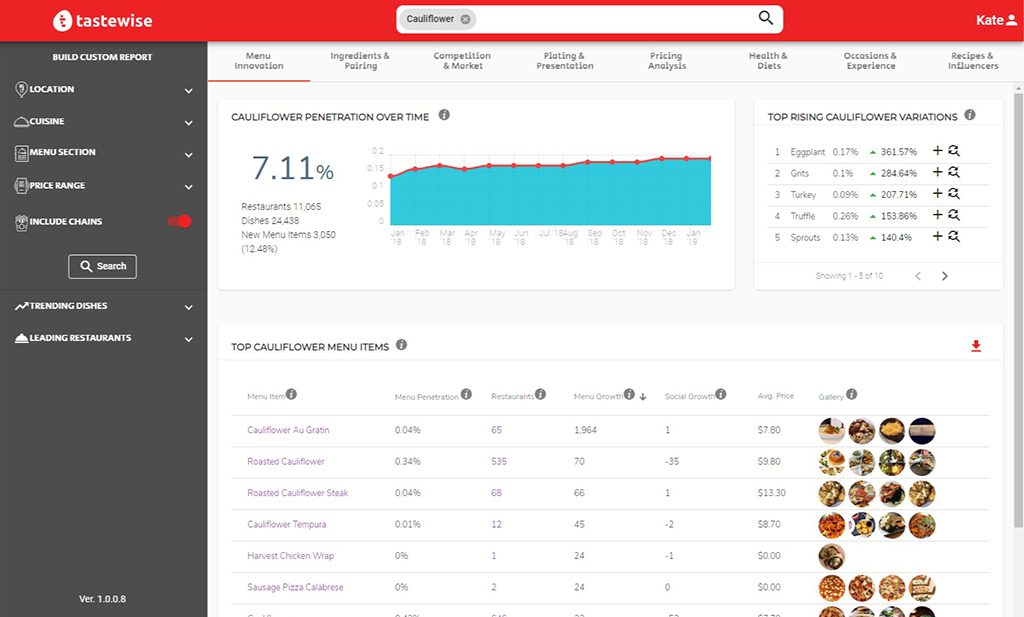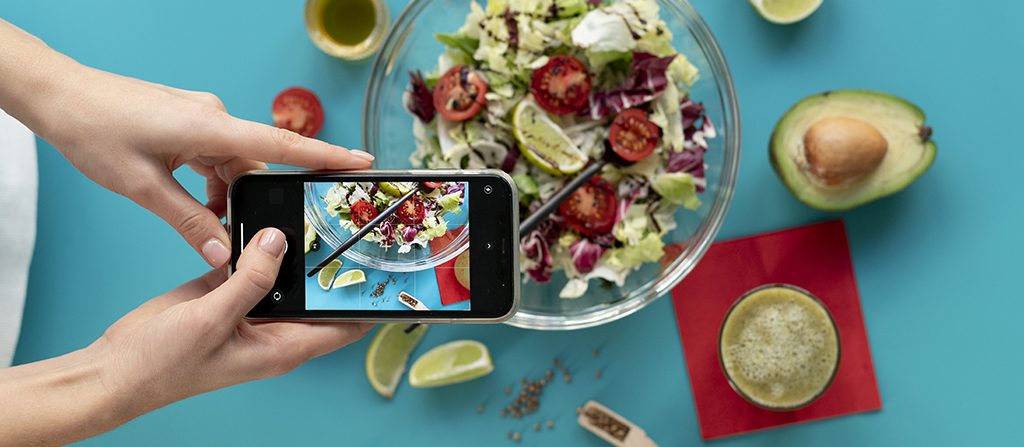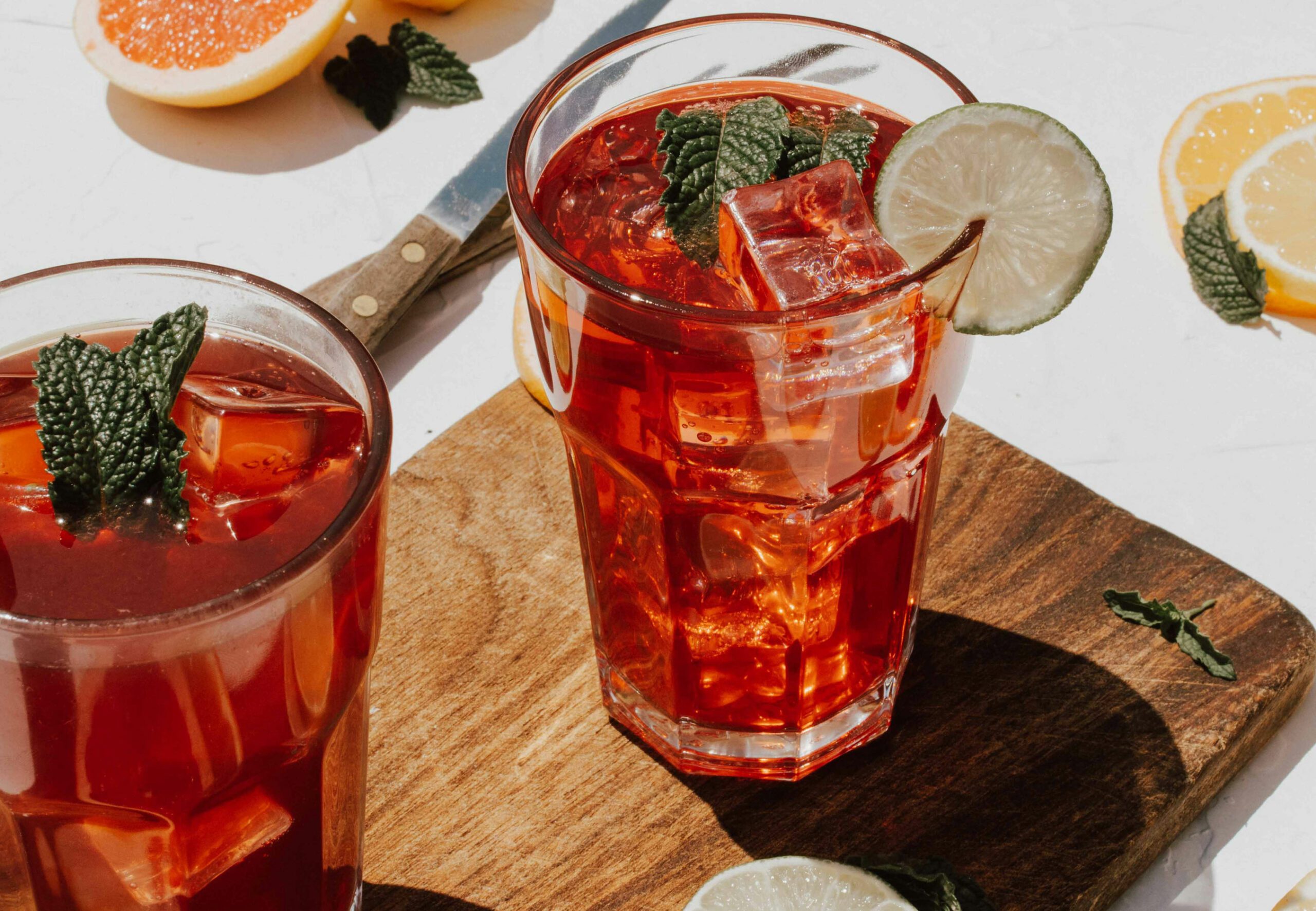It’s no longer science fiction: Artificial Intelligence (AI) is creeping its way into everything around us.
For some time now, our homes have had personal assistants like Amazon Alexa and Google Nest. These devices use AI-powered speech recognition and natural language processing to turn on our lights and to let us know the day’s weather. AI technology already is (or will be) found in everything from self-driving cars to healthcare and banking - and the food industry will be no exception to this permeation of machine-learning technology.
This post explores one of the more exciting applications of AI in the food industry: Trend forecasting.
Powered by complex algorithms and data models, AI-driven food trend forecasting is on its way to revolutionizing the way brands discover new consumer preferences and shifts in the culinary space.
How brands have historically predicted consumer trends
Before we get into AI forecasting, let's review how brands have historically anticipated shifts in consumer behavior.
1. Research partners: Brands have, and continue to, collaborate with research companies (Nielsen, Gartner, IPSOS, etc.) to predict consumer trends by leveraging their extensive data, analytics and industry expertise. These companies themselves are likely already developing AI solutions to parse large datasets.
2. Online and in-store sales data: Some companies have analyzed sales data from brick-and-mortar and online stores to provide valuable insights into consumer activity and buying habits. This has been a fairly helpful way for businesses to spot trends that are occurring in real time.
3. Direct market research: Good old-fashion qualitative and quantitative data. Surveys, focus groups and interviews have all played a role in helping identify shifting consumer preferences.
4. Food industry events: The buzz around new product innovations is often very apparent to marketers attending industry events, conferences and trade shows. These observations have served as inspiration for many to take an idea from one category and apply it to another.
5. Expert insights: Companies have collected wisdom from those in the "trenches" of the food industry. Chefs, nutritionists and food scientists often have great intuition built out of a deep understanding of where things might be moving.
6. Food service and restaurant trends: Food service and restaurant industries will often pick up on new consumer preferences that eventually make their way into retail products.
7. Social media monitoring: By tracking popular terms, hashtags, social sentiment, influencer topics and user-generated content, brands have been able to identify nutritional movements early on. Some viral TikTok trends have found their way into retail stores.
So, how does AI forecast food trends?
To identify trends, AI tools combine vast amounts of data to gain a more comprehensive understanding of food topics, as well as the overall landscape.
This data can come from a wide variety of sources. Social media, internet search trends, recipe websites, blogs, and online reviews are just some of the data sources that can be used.
This represents one of the most powerful advantages of AI technology, to be able to combine vast quantities of data, from different sources, and find helpful patterns or insights hidden inside.
It is the patterns, connections and correlations (work that is often too complex, costly or time-consuming to undertake) that help provide the most unique and valuable predictions of consumer preferences, interests, and upcoming trends.

The company Tastewise is a leader in the food and beverage AI field. We asked Sam Newman, Tastewise's Director of Enterprise Accounts, about their AI capabilities;
“Tastewise allows us to process literally billions and billions of data points within a food and beverage-based taxonomy. You can basically combine things like mustard, mayonnaise and ketchup into a condiments category - something a keyword solution wouldn’t be able to do - and use the results to discover new ideas, new ingredients, dishes and claims that we didn't know existed.”
Algorithms are only as powerful as the data you feed them, however - which is why Tastewise looks at a number of different data sources including restaurant menus, recipes and social media.
"The reason we do that is because you need to be in every place a trend is beginning. Because we have such quality data, it allows us to feed it into the algorithms and that gives us much better results. Our AI allows us to answer questions like... ‘What are Gen Z's pairing with tahini in New York?’"

How can brands like yours use AI-driven food trend data?
Using artificial intelligence, businesses of all shapes and sizes will be able to more effortlessly accumulate data, analyze trends, and come up with data-driven decisions.
- AI can help process and analyze data that helps businesses develop product innovations that help them stay one step ahead of their competitors.
- AI trend data can help brands with operational choices, like forecasting demand: By analyzing large volumes of data, AI may be able to help CPG brands predict product/ingredient demand more accurately.
- AI trend data can help brands develop more strategic marketing campaigns, social media and blog content. For those that have recipe sections on their websites, it will provide clues to more interesting recipes that drive repeat visits.
AI-driven trend forecasting will save brands a lot of time, money, and resources, and will help them to make more informed decisions.
Are there challenges with AI to be aware of?
There are of course hiccups to be aware of when using AI. Because of this, artificial intelligence is unlikely to be a perfect replacement for human intelligence, at least for the near future.
It’s been well documented that although AI can help detect patterns in large datasets, and provide insights that humans might miss, it can also make errors, produce inaccurate results, and contain biases (as we pointed out in our 2023 International Women's Day campaign).
Additionally, AI can lack human intuition and creativity, which is why we recommend a "collaborative" approach. By using AI as a tool in conjunction with human expertise and experience, brands can harness the potential of machine learning while avoiding its sometimes quirky pitfalls.
Conclusion
Artificial Intelligence has revolutionized various industries, and the food industry will be no exception. With the help of AI, businesses can stay ahead of the competition by allowing them to discover emerging trends and/or develop new products. And that’s good for both consumers and brands.
Crew uses AI in another way you might be interested in. We use a cognitive AI tool, based on hundreds of neuro-analyses, that predicts how much effort consumers have to go through to understand packaging and video, which can inform our outputs. For more information on this tool and how we have been leveraging it, you can email us at: info@crewmp.com and we'll put you in touch with the right people!
